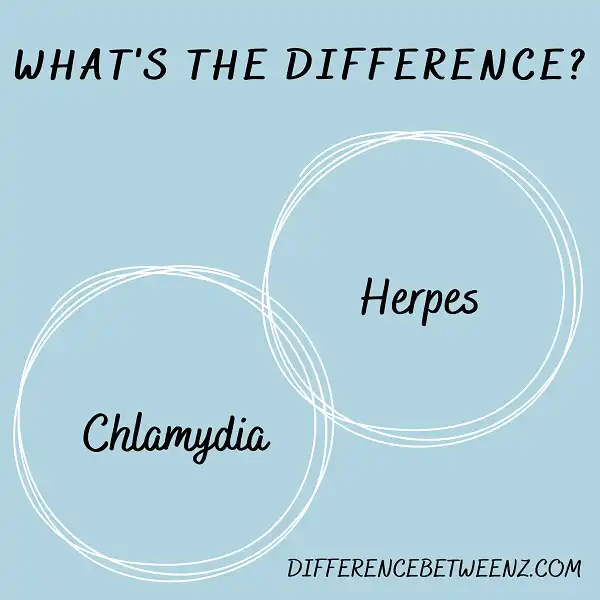Chlamydia and herpes are two of the most commonly spread sexually transmitted diseases. It is essential to understand the difference between these two infections as they can cause different symptoms and require completely different treatments. Knowing which one you might be suffering from is key in getting timely advice and treatment so that you can move on with your life in comfort and peace. In this blog post, we will take a closer look at both chlamydia and herpes – what they are, their respective symptoms, diagnosis methods, and treatments available for each condition so that you have all the information necessary to make informed decisions about your healthcare needs.
What is Chlamydia?
Chlamydia is a bacterial infection that can have serious consequences if it’s not treated properly. It is one of the most common sexually transmitted infections, and it can affect both men and women. Chlamydia symptoms might not be easy to spot without the help of a medical professional, but some early warning signs include pain when urinating and unusual genital discharge.
It’s important to get tested regularly for Chlamydia if you’re sexually active, especially if you experience any Chlamydia symptoms, as it’s easily spread through sexual contact and could lead to more serious issues like infertility or pelvic inflammatory diseases in women. With the right treatment, Chlamydia can be managed so it’s important to ensure you stay up-to-date with your doctor appointments.
What is Herpes?
Herpes is one of the most commonly-spread viral diseases in the world, but many people don’t truly understand what it is. Herpes is caused by a Herpes Simplex Virus (HSV) and it can be transmitted both through direct contact and through sexual intercourse.
- Herpes has two different forms – Herpes Simplex 1 (HSV1), which primarily causes oral Herpes, and Herpes Simplex 2 (HSV2), which mainly affects the genitals.
- Although Herpes cannot be cured, there are several treatments available that can help manage both physical symptoms like pain and itching as well as prevent its transmission to others.
- It’s important to recognize the signs of Herpes so that you can get the proper treatment you need, while also taking active steps to protect yourself and your partners.
Difference between Chlamydia and Herpes
Chlamydia and Herpes are two very common sexually-transmitted diseases, but they differ in several ways.
- Chlamydia is caused by a bacterium, Chlamydia trachomatis, and is transmitted through sexual contact with an infected partner. It presents primarily as genital discharge and pelvic pain in women, or penile discharge in men.
- On the other hand, Herpes is caused by a virus, HSV (Herpes Simplex Virus), that can be transmitted either through skin contact or sexual intercourse with an affected individual.
- Common symptoms of the infection are painful blisters filled with clear fluid on the area exposed to the virus, often around the mouth or genitals.
The fact that Chlamydia is bacterial and Herpes is viral makes them react differently to treatments – Chlamydia can be eradicated completely with antibiotics, whereas viruses such as Herpes cannot be cured but only managed.
Conclusion
Chlamydia and Herpes are two STDs that are often confused with each other. Chlamydia is caused by the bacteria Chlamydia trachomatis while Herpes is caused by the virus Herpes simplex. Both can be passed through sexual contact, but they have different symptoms. Chlamydia is usually asymptomatic or will cause discharge and burning sensation when urinating while Herpes will cause itching, redness, bumps, or blisters around the genitals. It’s important to get tested if you think you may have either STD so treatment can begin as soon as possible.


